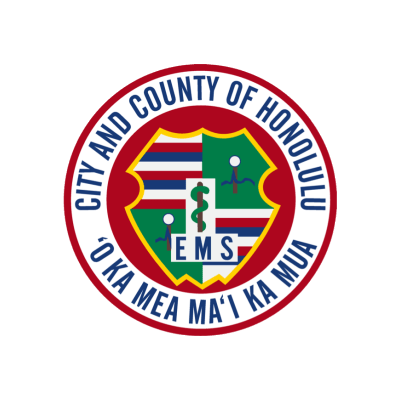
The History Behind the Design

The seal was designed to tell a story about the city and county of Honolulu, Emergency Medical Services division. Incorporating the old and the new, each color and symbol of the seal represents a part of Hawaiʻi and emergency medical services.
The design of the shield was taken from the precursor of Hawaiʻi’s coat of arms, prepared in London in 1843-44. It is divided into four quarters. The first and fourth represent the stripes of the Hawaiian flag. Kapu sticks and EKG waves make up the second and third quarters.
The design of the shield was taken from the precursor of Hawaiʻi’s coat of arms, prepared in London in 1843-44. It is divided into four quarters. The first and fourth represent the stripes of the Hawaiian flag. Kapu sticks and EKG waves make up the second and third quarters.
The kapu sticks (puloulou), a white ball on a brown wooden shaft, are the symbol of the kahuna in ancient Hawaiʻi. Kahuna means “the gifted one”: trained, intelligent men. “The gifted one” may well be applied to the person wearing this seal, as he, too, is trained and gifted with the knowledge to help the sick and injured and save lives.
The EKG waves running across the shaft of the puloulou represent modern medicine.
The field of green represents the islands and her rich green foliage, distinctive and unique to Hawaiʻi in all the United States.
The staff of Aesculapius, a stick with a snake wound around it, is situated in the center of the shield. Aesculapius was the roman god of medicine. Snakes were sacred to Aesculapius because it was believed that they had the power to renew their youth by shedding their skin and growing a new one. The staff of Aescupalpius signifies the art of healing.
The field of red is in honor of those who died while serving in the city and county of Honolulu Emergency Medical Services, and of Nolan Ho, the only one ever killed in the line of duty. Nolan was killed in February 1958 while performing his duties as an ambulance attendant with the City. He was 23 years old.
Near the top of the seal, in blue lettering, are the words city and county of Honolulu, and along the bottom edge is the motto of the service, in Hawaiian: “the person sick is first” - "O Ka Mea Maʻi Ka Mua."
